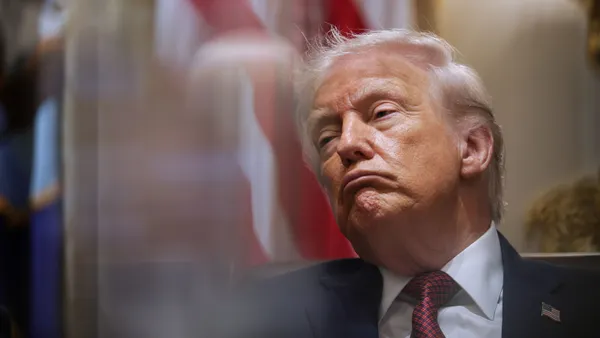Dive Brief:
- The World Trade Organization's Trade Facilitation Agreement (TFA) entered force Wednesday after Rwanda, Oman, Chad and Jordan ratified the trade deal, surpassing the 110-country minimum to begin implementation.
- Originally proposed in 1996, the TFA sets a standard for customs activity among parties to the deal. The U.S. ratified the agreement on Jan. 23, 2015, and per the terms of the agreement, must immediately begin its implementation once the 110th country signed on (the final count was 112).
- A 2015 study forecasted the agreement would reduce trade costs by 14.3%, boosting global trade by up to $1 trillion per year. In addition the WTO notes the agreement will likely reduce import times by more than a day, and export times by two days.
Dive Insight:
While in recent years free trade agreements have become anathema to job losses due to tariff reductions and other good-specific clauses, the TFA is a far more simple and non-controversial deal seeking to reduce the regulatory burden of global trade by standardizing customs procedures.
The agreement includes clauses on publishing necessary customs information online, creating automated customs windows and various stages of implementation based on a country's stage of development and type of good handled. In addition, since the U.S. has already ratified the agreement exiting would be far more difficult than in the case of the 12-country Trans-Pacific Partnership for example. The main hurdle was getting the agreement passed in the first place (112 ratifications takes time, after all).
Supply chain managers should rejoice: the more than twenty year old agreement has long been in the pipeline and will, simply, make the customs broker's job easier allowing for faster processing. While the effects may not be immediately visible, as the world begins to implement the systems and publish the information, full-chain visibility becomes more likely.













